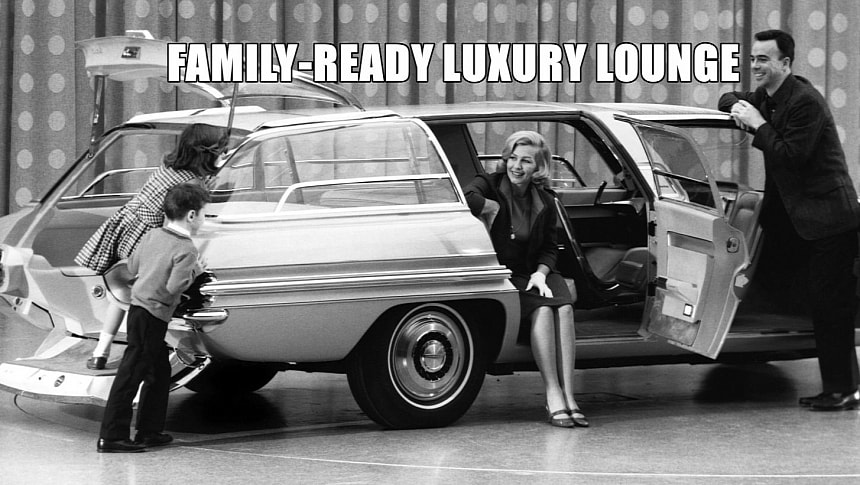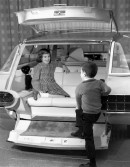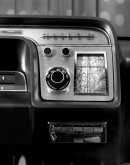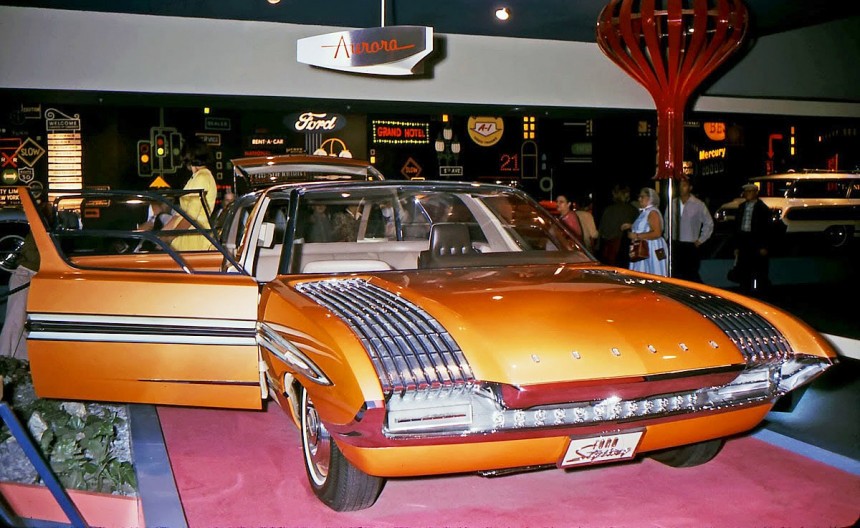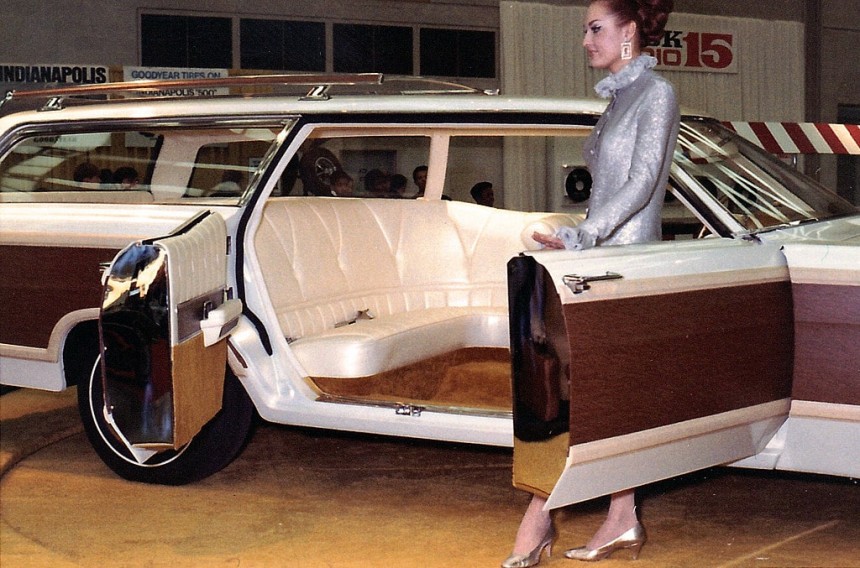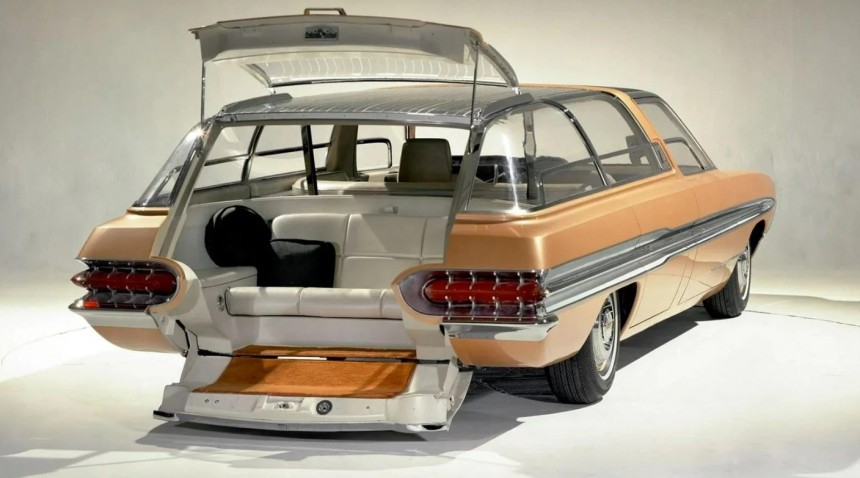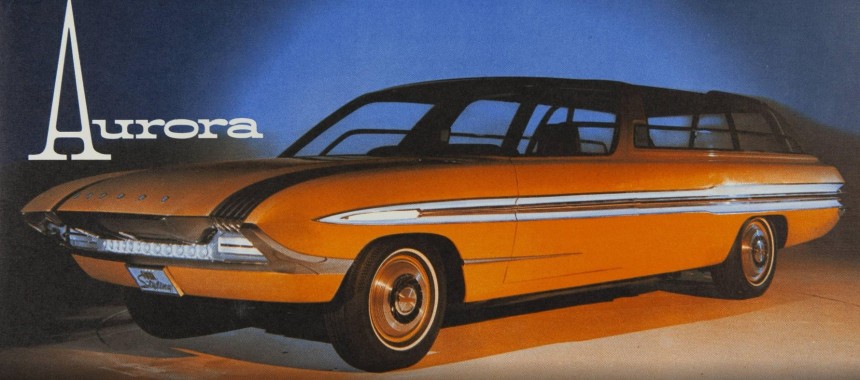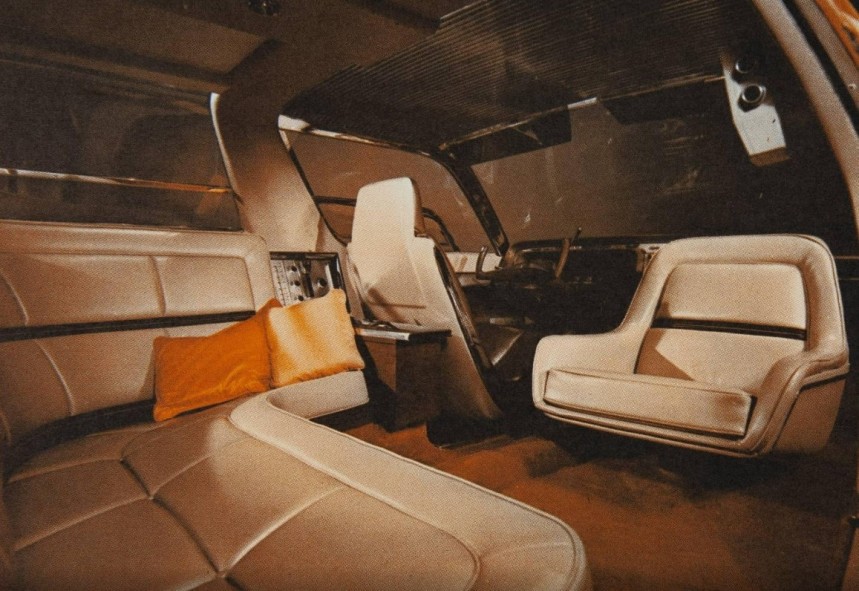Concept cars, like the majority of concepts, are designed to push boundaries and explore new design territory, implement new tech, and test the waters for innovation. Done well, some may even turn a standard vehicle into a new breed of people-mover, even if they never make it into production.
As a rule, a station wagon can be a lot of things: it's spacious and practical, and comfortable and accommodating for a large number of passengers. It might even be good-looking in a very station wagon kind of way, but a station wagon is almost never luxurious in the most basic understanding of the term.
Unless that station wagon is Ford's 1964 Aurora concept.
Never intended for production, whether limited or mass, it was, at the time of its introduction, the most advanced station wagon to come out of Dearborn, with potential to influence future designs. The Aurora was meant to put Ford back on the map in this particular segment of the market and ended up foreshadowing many of the features that are quite common in today's people movers, the SUVs and the crossovers.
The Ford Aurora was more than just a people mover, though. It was imagined as the next iteration of the typical station wagon, so it was styled like a luxury lounge on wheels with no less than three separate spaces. With no such pressing concerns as passenger safety beyond the inclusion of rollover protection and adjustable road lights, the space inside became an extension of an American's living room – but better equipped and way fancier.
Though Ford never planned to bring the Aurora into production, it did like the idea enough to carry it through two different versions. The first one, aptly called Aurora I, was introduced at the 1964 edition of New York World's Fair, where it went on central display in Ford's exhibit of practical dream cars.
Aurora II came in 1969 and was based on a LTD Country Squire wagon, which had the B-pillars removed to create an unbroken space that doubled as a lounge. The first Aurora was a "dream car" in every sense of the word, but Aurora II was more feasible, with a heavier focus on practicality, for which reason it probably feels more like a wasted opportunity.
Not that Aurora I wasn't an outstanding vehicle on its own. Integrating no less than 23 advanced, never-before-done features (as per the brochure Ford circulated at the trade event), it was the most daring and advanced take on a family station wagon to that date. Sadly, its premiere at the event was eclipsed by the introduction of the 1965 Mustang, so it didn't get as much attention as it could have.
But the decades that followed did it justice, as we're also trying to do now. The Aurora stood out not just because it integrated innovative features and highlighted passenger safety, but also because it seemed to have thought of every aspect of the journey and of every family member inside.
As mentioned above, the long 131-inch wheelbase allowed for a vehicle that was 227.55 inches long. Sacrificing luggage space, it was divided into three main areas: a children's compartment in the tailgate, a spacious and super-fun lounge in the middle, and the driver's cockpit. In total, the Aurora could comfortably accommodate at least six adults and as many kids as those adults could cram in the rear-facing bench in the tailgate – at least four of them, by our modest count.
The clamshell opening came with a carpeted step, allowing kids easy access, while the tailgate opened up and slid forward on tracks, so there was no danger of them bumping heads.
Even better (*for the adults, though not necessarily for the kids), the space could be sound-proofed by means of a glass partition that went up at the touch of a button. That's a fancy way of saying adults in the front could close off the rear and thus chat uninterrupted by tantrums, cries, or loud chatter. However, adults could still communicate with the kids by means of an intercom.
The middle section was the lounge, made up of an L-shaped curved sofa and the swiveling armchair that doubled as passenger seat. Features here included an entertainment command station with TV, AM/FM radio, and sound recorder, a table and a cabinet that held a fridge, glassware, and refreshments. Direct and indirect lights created the proper atmosphere for the kind of party happening inside.
The driver's "command post" was very advanced for its time, including a steering yoke with power assistance, a turnpike lane indicator that showed the safe speed for any lane and warnings of blocked lanes ahead, and space for a cruise control device and an early, analog form of GPS, showing maps and automatic location of the vehicle.
Innovation wasn't limited to the interior of the Aurora. The wraparound windshield allowed for maximum visibility and extended to meet a polarized sunroof that could tint at the touch of a button. This is often described as an early version of today's smart glass and was achieved by means of two layers of polarizing material in parallel strips, with a 90-degree axis of polarization between each one. Press a button, and the axis would change, turning the sunroof from opaque to light green.
The Aurora also featured grille vents on both sides of the hood, allowing for better ventilation and, consequently, the use of a smaller radiator and a more aerodynamic front end. Traditional headlights were replaced with 12 one-inch beam lights described as "minibank headlamps" with adjustable brightness.
Front and rear indicators were still present, but Ford added white bodyside turn indicators as well. Electroluminescent lighting was integrated all along the bodyside for enhanced visibility and safety on the road. Ford called it a "cool light" system because it created light without first generating heat and estimated it would trickle down to many new safety applications in the future.
Other innovations included a rollover structure as an integral part of the design, and a reflective roof made of aluminum that reflected infrared rays. Louvered sun visors and jalousie windows also enhanced comfort while traveling.
The Aurora I featured an asymmetric design with two passenger doors on one side but just one door on the driver's side. Seeing how the lounge extended on that side, it made no sense to break up the space with another door.
The Aurora I was meant to show consumers what a station wagon of the future might look like or, as Gene Bordinat, Ford VP and director of styling, hoped, to "foretell the day of station wagon designs with completely unique chassis components divorced from passenger car lines." The Aurora was "a rolling laboratory of new ideas in styling and engineering for the future," and the ultimate family dream car. No doubt about it.
Unless that station wagon is Ford's 1964 Aurora concept.
Never intended for production, whether limited or mass, it was, at the time of its introduction, the most advanced station wagon to come out of Dearborn, with potential to influence future designs. The Aurora was meant to put Ford back on the map in this particular segment of the market and ended up foreshadowing many of the features that are quite common in today's people movers, the SUVs and the crossovers.
Though Ford never planned to bring the Aurora into production, it did like the idea enough to carry it through two different versions. The first one, aptly called Aurora I, was introduced at the 1964 edition of New York World's Fair, where it went on central display in Ford's exhibit of practical dream cars.
Aurora II came in 1969 and was based on a LTD Country Squire wagon, which had the B-pillars removed to create an unbroken space that doubled as a lounge. The first Aurora was a "dream car" in every sense of the word, but Aurora II was more feasible, with a heavier focus on practicality, for which reason it probably feels more like a wasted opportunity.
But the decades that followed did it justice, as we're also trying to do now. The Aurora stood out not just because it integrated innovative features and highlighted passenger safety, but also because it seemed to have thought of every aspect of the journey and of every family member inside.
As mentioned above, the long 131-inch wheelbase allowed for a vehicle that was 227.55 inches long. Sacrificing luggage space, it was divided into three main areas: a children's compartment in the tailgate, a spacious and super-fun lounge in the middle, and the driver's cockpit. In total, the Aurora could comfortably accommodate at least six adults and as many kids as those adults could cram in the rear-facing bench in the tailgate – at least four of them, by our modest count.
Even better (*for the adults, though not necessarily for the kids), the space could be sound-proofed by means of a glass partition that went up at the touch of a button. That's a fancy way of saying adults in the front could close off the rear and thus chat uninterrupted by tantrums, cries, or loud chatter. However, adults could still communicate with the kids by means of an intercom.
The middle section was the lounge, made up of an L-shaped curved sofa and the swiveling armchair that doubled as passenger seat. Features here included an entertainment command station with TV, AM/FM radio, and sound recorder, a table and a cabinet that held a fridge, glassware, and refreshments. Direct and indirect lights created the proper atmosphere for the kind of party happening inside.
Innovation wasn't limited to the interior of the Aurora. The wraparound windshield allowed for maximum visibility and extended to meet a polarized sunroof that could tint at the touch of a button. This is often described as an early version of today's smart glass and was achieved by means of two layers of polarizing material in parallel strips, with a 90-degree axis of polarization between each one. Press a button, and the axis would change, turning the sunroof from opaque to light green.
The Aurora also featured grille vents on both sides of the hood, allowing for better ventilation and, consequently, the use of a smaller radiator and a more aerodynamic front end. Traditional headlights were replaced with 12 one-inch beam lights described as "minibank headlamps" with adjustable brightness.
Other innovations included a rollover structure as an integral part of the design, and a reflective roof made of aluminum that reflected infrared rays. Louvered sun visors and jalousie windows also enhanced comfort while traveling.
The Aurora I featured an asymmetric design with two passenger doors on one side but just one door on the driver's side. Seeing how the lounge extended on that side, it made no sense to break up the space with another door.
